Racing Commentary Mini-Mix (Wave Race 64, Wipeout HD, MotorStorm: Pacific Rift)
April 9th, 2017
In finalising copy for the (eventual) release of the Adventures in Games Analysis bookazine, I decided to roll several articles on racing games into the one essay. Four months of semi-regular writing later, the essay has evolved into a side project of its own. I’m very happy with how the copy is shaping up and plan on releasing it as a separate piece of writing at some point in the future. The following three sets of comments were clipped from my original notes and I thought it appropriate to share them here.
Wave Race 64
-
The faster a jet-ski travels, the easier the vehicle is to steer. And so jet-skis invert the high-speed-less-control dynamic we associate with (car) racing. I found that my pre-existing knowledge worked against me in this regard. When thought of in this light, we can see how weaving between the buoys (which increases the player’s speed meter) supports the player in winning races (by giving them greater craft control).
-
The waves look naturalistic, but follow predetermined patterns. The variable element isn’t so much the behaviour of the waves, but the behaviour of the players. Each time the player attempts a race, their performance—i.e. their synchronisation with the wave cycles—varies. Thus creating the impression of dynamic wave behaviour.
-
The wave forces accentuate the dimensionality of the 3D space by distorting the ground beneath the player and displacing the craft’s position.
-
Nintendo pursue realism through gameplay rather than realism through visual presentation. From this perspective, realism functions as a launching pad for expanding gameplay and making play more intuitive (i.e. based on familiar, real-world experiences). The water physics, for example, expand the potential variation within the race scenario (choppy water, calm water, etc.) and can be easily read through their visual appearance. Other neat examples of realism include the gradual clearing of fog in Drake Lake and the darkening of the screen and glare on the final turn of Sunset Bay.
-
I like how Nintendo leveraged various types of game elements to create track themes. For example, Port Blue simulates an industrial port through its choppy water, the crates in the water; narrow, man-made channels; ramps which function as barges; and docked ships which outline the race track.
-
With the zoomed-in view, the player character creates a blindspot right in the middle of the screen.
-
Wave Race 64 doesn’t directly teach many of the nuances required to beat the hard and expert campaigns. Rather, the player needs to find out through good ol’ trial and error.
Wipeout HD
-
I think it would be awesome if the reverse “black” tracks were connected to their regular “white” counterparts. That is, a mode where the player reaches the end of a white track and then spins their craft around (as in Eliminator mode) and does a lap of the black track. As in Wario Land 4, the player would have to actively reevaluate their working memory of the stage.
-
The ship names and designs are symbolic of the nations they represent and the technologies available to them. Form fits function doubles as a good way to communicate narrative. You know, as opposed to, say, reading the actual Wipeout backstory.
-
Health plays a big role in the player’s decision-making process. For example, whether they should absorb or use a weapon, enter a fray or steer clear, and attempt a barrel roll or play it safe. I wish the game would have rival craft flash red when they are low on health, as this information would facilitate more assertive weapon use.
MotorStorm Pacific Rift
-
The explanations of each game type, the controls, and the boost meter appear once and then never come back. Pacific Rift is a straightforward game, but I wasn’t able to get all the controls down in the first race.
-
Given the realistic physics and varied terrain, even small bumps can send some vehicles spiralling through the air. Yet such details only come into view at the last second as your vehicle often obscures the area directly in front of them. When you switch to a first-person viewpoint the other vehicles hide outside of your horse-like vision. It’s a lose-lose situation.
-
Pacific Rift fails to find the right balances between functionality and naturalism. The tracks are a little too organic-looking, making it difficult to read the boundaries of the level, the racing line, and the branching paths.
I’m currently taking a break from writing the racing game essay, so expect to see more material up on the blog.
Additional Readings
Getting the Most from Speed Races in MotorStorm Pacific Rift – Playstation Blog
MotorStorm: Pacific Rift – Can You Beat Us? – Playstation Blog
Nintendo Magazine System – Wave Race 64 Maps (I couldn’t find any decent maps online, so I put them online myself)
VG Commune Episode 35: Dynamic Challenge (Wave Race 64)
VG Commune Episode 36: Optional Challenges (Wave Race 64)
Mario & Luigi: Bowser’s Inside Story – Traditional RPG Systems meets Functional Design
December 17th, 2016
Bowser’s Inside Story‘s battle system adheres to Nintendo’s clean and functional approach to game design (see earlier articles on narrative and level design). Attacks operate in real time and test a variety of different skills, while the turn-based structure organises the moments of action into clean, discrete chunks. This strong core is surrounded by levelling, equipment, and badge systems which both enhance and weaken the game’s key asset. In this post we explore what happens when functional design meets traditional RPG systems.
Stats and Levelling
BIS retains the levelling system of the earlier games. As the player defeats enemies they gain experience points through which they level up and increase their attack, defence, and other stats. Levelling up is necessary to counter the increasingly stronger enemies the player encounters on their journey. This connection between levelling and enemy strength sustains most RPG battle progression. And yet I don’t believe that it serves the genre—nor BIS—very well.
BIS’s battles hinge on the player’s ability to successfully attack and dodge enemies. We know this because if a player cannot achieve these actions, then they will lose. Assuming the player is levelling up their eyes, mind, and fingers (which they are by virtue of them defeating a stream of unique enemies), then what purpose does having statistically stronger enemies serve other than to artificially inflate the difficulty? More to the point, how does levelling enhance the attacking and dodging functions which are central to BIS’s battle system? The numbers on screen change, but the animations, hit boxes, tells, and mix-ups powering the core functions remain the same.
(I’m a bit worried that my proposition here is somewhat simplistic, but so far I haven’t been able to come up with a counter argument, so we’re going to roll with it for now).
I would be lying, however, if I were to claim that the numbers game doesn’t serve some useful (albeit limited) purposes. Levelling clearly communicates to the player their progress in the form of a digit, even though they have no barometer at which to measure, compare, and ultimately make sense of the number. The player can also use levelling as a means to increase or decrease the challenge as needed by either avoiding or grinding enemies. Unfortunately the leeway afforded by levelling systems can be exploited so as to decrease the challenge to the extent that the game is unable to “squeeze” the player and express meaning through its gameplay challenges.
By removing the levelling system and visible statistics (aside from HP and SP), more emphasis would naturally fall on variation within the battle system (variation between individual challenges = difficulty curve). Between the large range of enemies, different combinations of enemy types, the enemy mix-ups, differences between the Bros and Bowser attacks and dodges, and external elements such as Bitties, there’s more than enough variation to sustain the gameplay. The player would still have access to a variety of existing means of scaling the difficulty, such as buying healing items or finding more beans. Speaking of which, a lack of levelling would increase the significance of beans and encourage the player to partake in this worthwhile side activity.
Equipment
The clothing (equipment) system is similar to levelling, but not quite. Multiple times throughout the adventure the player can spend coins on new clothing items which increase either the Bros.’s or Bowser’s stats. This routine adds another layer of artificial progression and does not support the core of the battle system. Purchasing goods itself also isn’t terribly interesting. Yet like levelling, equipment provides some wiggle room for less proficient players. Assuming enemy stats did not rise as the player reaches new areas (as mentioned earlier), I think it would be best if the clothes stores in the Mushroom Kingdom all closed shop.
Closing down the clothing shops wouldn’t actually have a significant effect as a great deal of clothing items aren’t available in shops. Rather, they’re strewn across the overworld in various nooks and crannies. In this sense, clothes are similar to beans, a reward for being observant and participating in extra tasks on the overworld. So while buying gear only serves to combat the artificial growth of enemies, finding gear makes the overworld portion of the game more engaging.
I would be remiss in not mentioning that a significant number of clothing items do more than simply prop up the stats of the avatars. Some items regenerate health, increase the chance of critical hits, potentially make the enemy dizzy after you jump on it, etc. Again, I can’t really fault this aspect of the equipment system either because such gear adds player-determined variation to the battles and encourages the player to experiment with different strategies and gameplay styles. Below, I have included some of my favourite examples:
Coin Socks
If the wearer takes no damage during a battle, 1.5x coins awarded
Gall Socks
Foes are 50% more attracted to attack the wearer
Challenge Medal
All enemies have HP, DEF, & SPEED increased by 50% and POW increased by 150%, but coins gained from battle increase by 50%
Heroic Patch
Special attack POW +30%, but SP cost doubles
POW Mush Jam
When wearer eats any type of mushroom (healing item), POW +20%
I just couldn’t go past the Softener Gloves:
Due to a coding error, occasionally raises enemy DEF by 25% rather than lowering it.
The examples above are unfortunately the exception and not the rule. The majority of non-stat-increasing clothing items are buffs and therefore aren’t terribly different to stat boosts at all. Where levelling was completely artificial, the equipment system is perhaps half synthetic (the routine of buying better gear and clothing as buffs) and half functional (clothing as collectables, clothing as adding variation and options to battles).
Badges
Badges are the third and final piece in the pie of systems which surround the core battle system. Mario and Luigi each have their own badge halves which connect together. As each character lands “Good”, “Great”, and “Excellent” (well timed) hits, their badge meter increases. Once both meters are maxed, the player can tap the touch screen to activate an effect. Mario’s badge determines the effect and Luigi’s badge determines the degree of effect. Unlike levelling and equipment, badges support the core functions of the game by rewarding the player for attacking and countering enemies. They also allow the player to customise battles so as to support their own playstyle. For example, I set the badges up so that after landing enough well timed attacks, I could heal half of the Bros’s SP. This meant that I had more opportunities to use the special attacks, something which I felt I needed more practice with.
The levelling system and some parts of the equipment system don’t support the core of what makes BIS’s battle systems so unique and engaging, and so they’re more like clutter than the potent force they are in more traditional RPGs. On the other hand, badges and some parts of the equipment system support the core functions of attacking and dodging and also enhance other areas of the game, such as the player’s engagement with the overworld. So depending on the implementation, traditional RPG systems can both complement and clutter a functionally designed core.
Mario & Luigi: Bowser’s Inside Story – Delayed Interaction
December 11th, 2016
Mario and Luigi: Bowser’s Inside Story employs a functional approach to RPG design where the experience is centralised around player actions. We saw this in the game’s story which hinges on the interplay between Bowser and the Bros, and we see this once again in the game’s level design.
Although BIS is an RPG, the employs higher order forms of level design, such as those popularised in Metroidvania titles. Much like those games, BIS has the player criss-cross a large, interconnected world which slowly opens up over time. Progression into new areas is dictated by a sequence of new abilities and the Bros. and Bowser’s alternating access to certain parts of the overworld. The beauty of this template lies in how the player’s experiences in different game states (i.e. with different ability sets) are layered together in rich and organic ways. To illustrate this particular point, I’d like to talk about beans.
Delayed Interaction (Beans)
Many games foreshadow new abilities, areas, or collectables before the player is able to reach them for the purposes of priming, creating anticipation, or testing the player’s ability to recall information. Beans in BIS are one such example.
For the first third of the game the player can only traverse the overworld as Bowser. During this time they’ll come across curious markings on the floor which they cannot yet interact with. These niggling elements linger in the mind and as the player comes to notice their consistent presence throughout the game world, they’ll begin to commit them to memory (whether consciously or subconsciously). After all, video games worlds aren’t natural environments, they’re intentionally designed—and so surely such ubiquitous markings must have some kind of purpose. Later on, the Bros leave Bowser’s body and are able to burrow under these markings and uproot the beans underneath for a permanent stat boost.
In many ways beans are similar to missiles in Metroid. The two sets of collectables increase the player’s power (number of strong attacks and player stats) and present their own mini-challenges (often based on observation).
The duration of the delayed interaction differentiates beans and missiles. Depending on when the player first sees the bean hole, the delay between the player seeing a bean hole and then being able to uproot the bean can range from 1-8 hours (8 hours roughly being the time in which the Bros. are captive in Bowser’s body). In a Metroid game, the gap is closer to 1-5 hours. Throughout this time the location of the beans fade in and out of your short-term memory. And as the game trudges on and presents the player with new information, remembering the older details becomes all the more difficult. So finally being able to close the knowledge gap by uprooting a bean hole can be a huge relief, cathartic even.
The number of beans is simply too great for any player to remember. Rather the challenge is keeping as much as you can in your head until you can act on it. The tension from this process therefore releases over the many hours it takes to collect the beans one by one.
Fortunately, the game world provide a structure for which the player can organise the vast amount of information. Beans (like missiles) are tied to specific areas of the map, and so the player recalls relevant information as they move through the game world. Speaking from my own experience, I find that collecting beans tends to complement the existing gameplay. The game will point me in a direction and as I begin the trek visual landmarks in the environment will reactivate my knowledge of nearby bean holes. In this sense, I feel that beans are a neat way of extending the gameplay and giving the player something else to do during the low-intensity gameplay of exploring the overworld.
Since the game world is large and interconnected, the player has a degree of freedom in determining the order in which they collect beans. They also have a lot of freedom in how much they wish to partake in the collectathon, with 251 beans in total. Alternatively, some players will choose to ignore this optional layer of gameplay, and that’s fine too. BIS accommodates both interested and non-interested players and allows interested players to engage however much they wish, however they wish.
By delaying the player’s ability to uproot beans, a connection is made between the player’s initial overworld rhomp as Bowser and their subsequent run as the Bros. In effect, the designers elicit two forms of engagement for the price of one. As Bowser, the bean holes invite the player to observe, chunk out, and retain sections of the game world in their short-term memory. As the Bros, the player draws on their short-term memory to recall and then uproot the beans. Whether you’re playing Metroid, Mario & Luigi, classic Resident Evil or any other games which utilises this higher order form of level design, this process of mentally reconstructing fragments of the game world in your head is a highly engaging top-tier challenge.
Overall, I think beans work so well because they rely on the player’s curiosity (give the them some buy-in); create anticipation through delayed interaction; and allow the player to retrieve the beans organically, at their own leisure, and in a sequence which suits them.

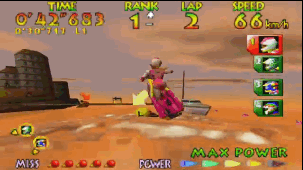
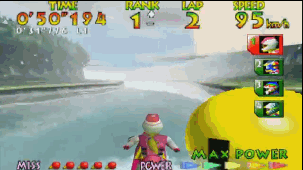
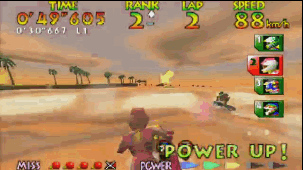

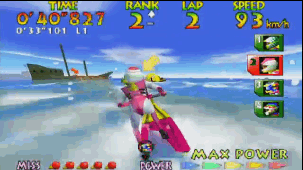

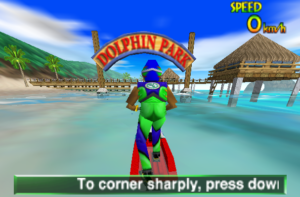
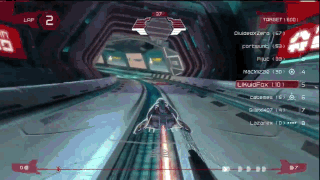


 Game Design Companion: A Critical Analysis of Wario Land 4 - $7.99
Game Design Companion: A Critical Analysis of Wario Land 4 - $7.99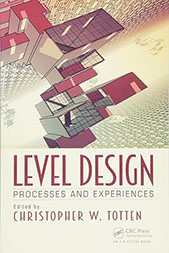 Level Design: Processes and Experiences
Level Design: Processes and Experiences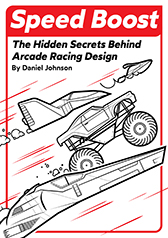 Speed Boost: The Hidden Secrets Behind Arcade Racing Design - $5.99
Speed Boost: The Hidden Secrets Behind Arcade Racing Design - $5.99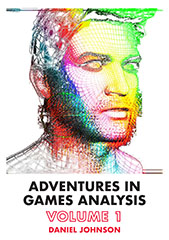 Adventures in Games Analysis: Volume I - $5.99
Adventures in Games Analysis: Volume I - $5.99







